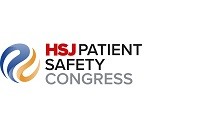The Department of Health’s report on the NHS’s record in the months April to June presents an impressive list of achievements and the NHS staff responsible for them should rightly feel proud. But look closer and a less reassuring picture emerges.
In June 2010 just two trusts and no primary care trusts were predicting year-end deficits. This year the figures are six and three.
The 2010-11 first quarter forecast deficit was £55m. The actual figure turned out to be £103m. The year-end projections for 2011-12 are for deficits at the six trusts of £170m, and an overall surplus for trusts of just £61m. Tiny sums compared with overall NHS expenditure, but a worrying trend.
The DH report does not, of course, cover the foundation trust sector, but a similar picture is emerging there. Nearly one in five acute foundation trusts (15 out of 79) have financial at-risk ratings of one or two, 50 per cent higher than the last quarter.
Waiting times for care are holding steady, true, and there even seems to be some small success at last in controlling emergency admissions. But since December 2010 there has been a sustained rise in diagnostic waiting times – the time honoured way of managing waiting lists.
So what about progress against the £20bn quality, innovation, productivity and prevention target? The DH declares PCTs are “seeking £5.9bn of savings” in 2011-12, £3.1bn from acute services, which is “slightly ahead of schedule”. Heartening, except that the DH declined to tell HSJ how much has been saved to date. We encourage it to come up with an answer before health secretary Andrew Lansley and NHS chief executive Sir David Nicholson appear before Stephen Dorrell’s Commons health committee next Tuesday.
Drill deeper and two more significant concerns emerge. The first is that the worst financial pain is being felt in and around London. All the PCTs and trusts predicting a deficit can be found within a 22 mile radius of central London.
All of the NHS will be asking: is London “different” or simply first to feel the impact of reduced funding growth? The answer is that it is the particular challenges of the region which have led it to feel the pinch before others.
The second concern is that those trusts with problems appear to have very big ones – for example Pennine Acute Hospitals Trust accounts for over 10 per cent of all diagnostic waits of longer than six weeks. There are numerous other examples across a range of indicators – particularly financial ones.
Little wonder the DH report is full of exhortations, such as “organisations with large numbers of long waits for diagnostic tests must improve their performance quickly”. There is real concern that outliers on both finance and performance are getting even further away from the acceptable norm.
A very senior DH source told HSJ that those organisations and health economies unable to get a grip could expect “forensic” attention from the department. There is no one size fits all model being applied, but solutions are being sought with a rapidity that may surprise and perhaps alarm the local NHS, particularly GP commissioners.
It is encouraging to see the DH thinking about offering support to health economies facing service reconfiguration. Many HSJ readers will welcome the “cover” as they make difficult decisions, especially after a politically motivated moratorium delayed much planned service change.
The move is also a recognition that unless service change is driven much faster, the financial and performance problems may start to become critical in dozens of NHS organisations. The scale of the challenge, in London particularly, is now as much Mr Lansley and Sir David’s problem as that of NHS London chief executive Dame Ruth Carnall.


























6 Readers' comments